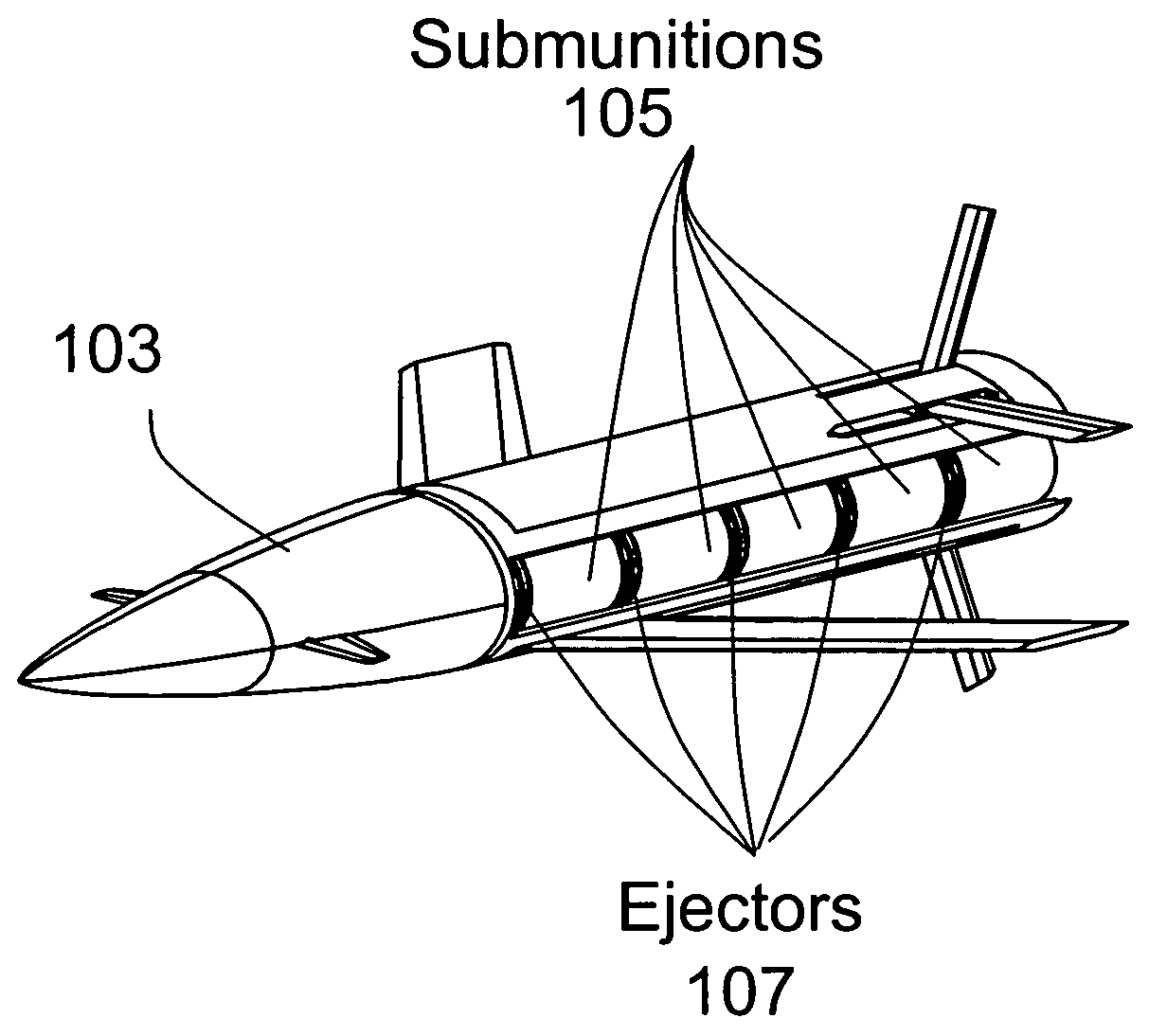Variable-force payload ejecting system
a payload and variable force technology, applied in the field of ejecting items, can solve the problems of high shock acceleration load on the submunition, the ejecting system cannot compensate for variations, and the multiple target areas separated by some distance cannot be accommodated by a single air vehicle, so as to achieve the delivery of submunitions precisely, the effect of precision and accuracy
- Summary
- Abstract
- Description
- Claims
- Application Information
AI Technical Summary
Benefits of technology
Problems solved by technology
Method used
Image
Examples
Embodiment Construction
[0015]Referring now to the drawing wherein like numbers represent like parts in each of the several figures, the composition and function of a representative variable-force ejecting system is explained in detail.
[0016]Any and all of the numerical dimensions and values that follow should be taken as nominal values rather than absolutes or as a limitation on the scope of the invention. These nominal values are examples only; many variations in size, shape and types of materials may be used, as will readily be appreciated by one skilled in the art, as successfully as the values, dimensions and types of materials specifically set forth hereinafter. In this regard, where ranges are provided, these should be understood only as guides to the practice of this invention.
[0017]FIG. 2A shows a representative variable-force ejecting system in its inactivated state while FIG. 2B shows the ejecting system activated and ready to expel an item (submunition) 301.
[0018]As illustrated in FIG. 1B, air ...
PUM
 Login to View More
Login to View More Abstract
Description
Claims
Application Information
 Login to View More
Login to View More - R&D
- Intellectual Property
- Life Sciences
- Materials
- Tech Scout
- Unparalleled Data Quality
- Higher Quality Content
- 60% Fewer Hallucinations
Browse by: Latest US Patents, China's latest patents, Technical Efficacy Thesaurus, Application Domain, Technology Topic, Popular Technical Reports.
© 2025 PatSnap. All rights reserved.Legal|Privacy policy|Modern Slavery Act Transparency Statement|Sitemap|About US| Contact US: help@patsnap.com



